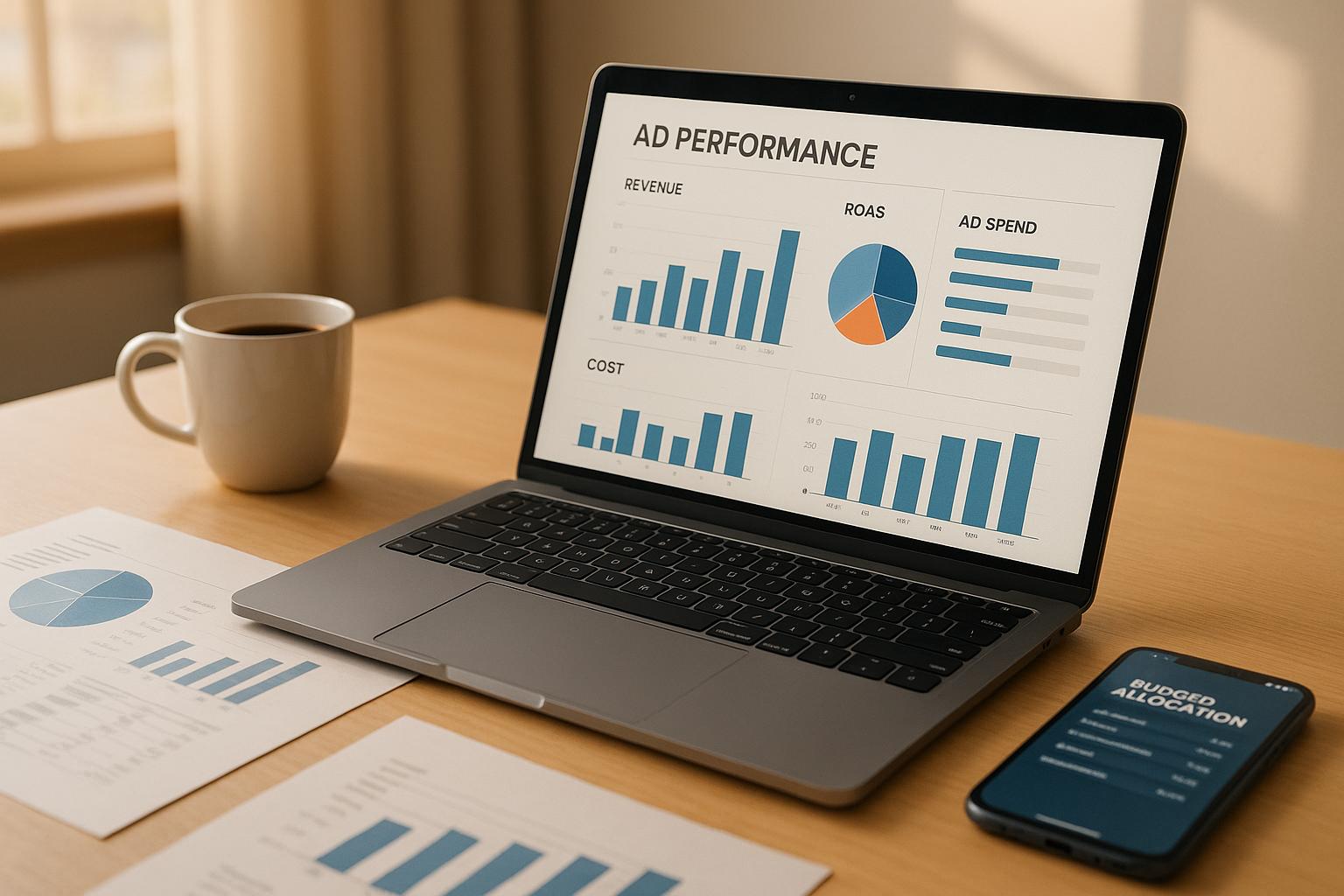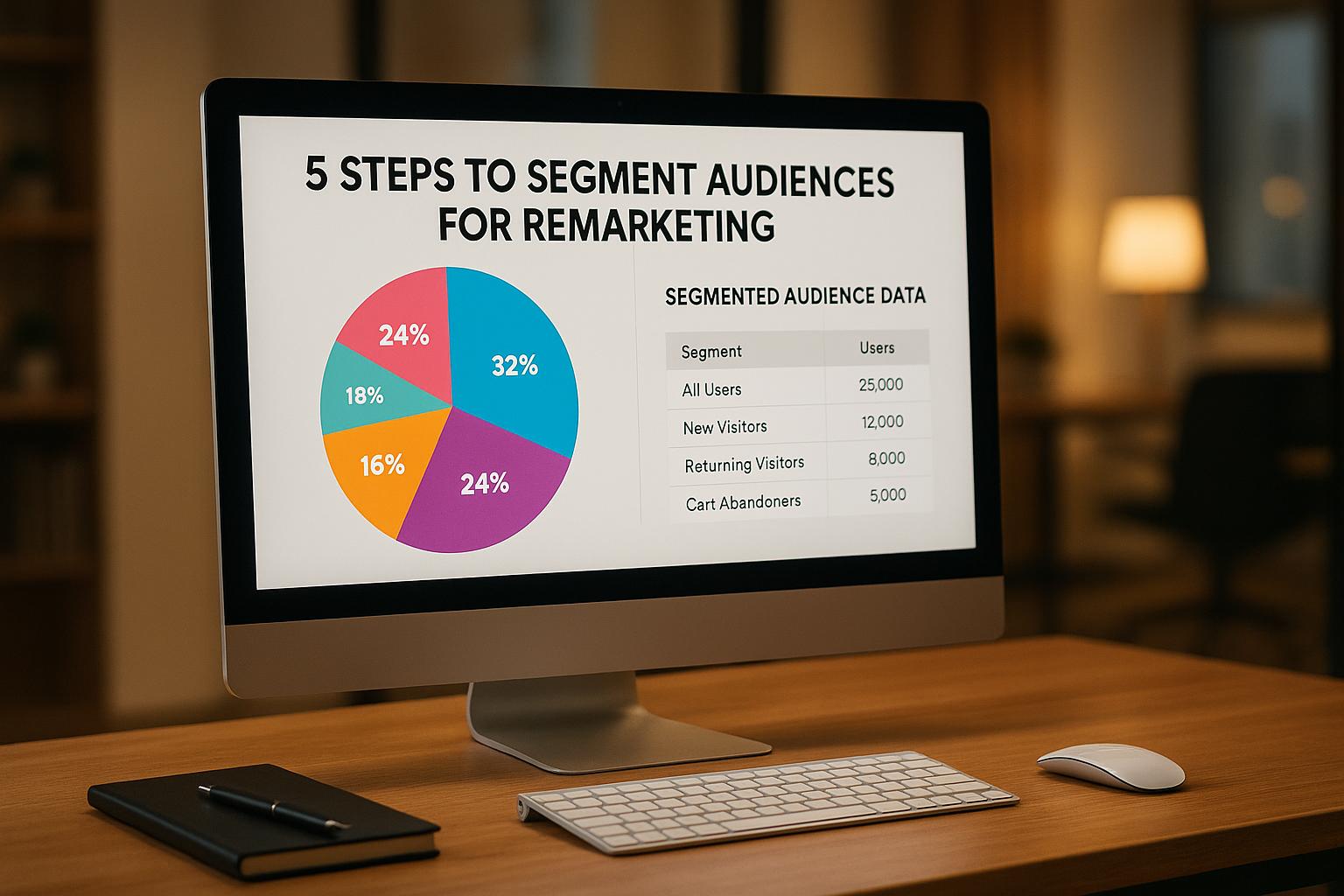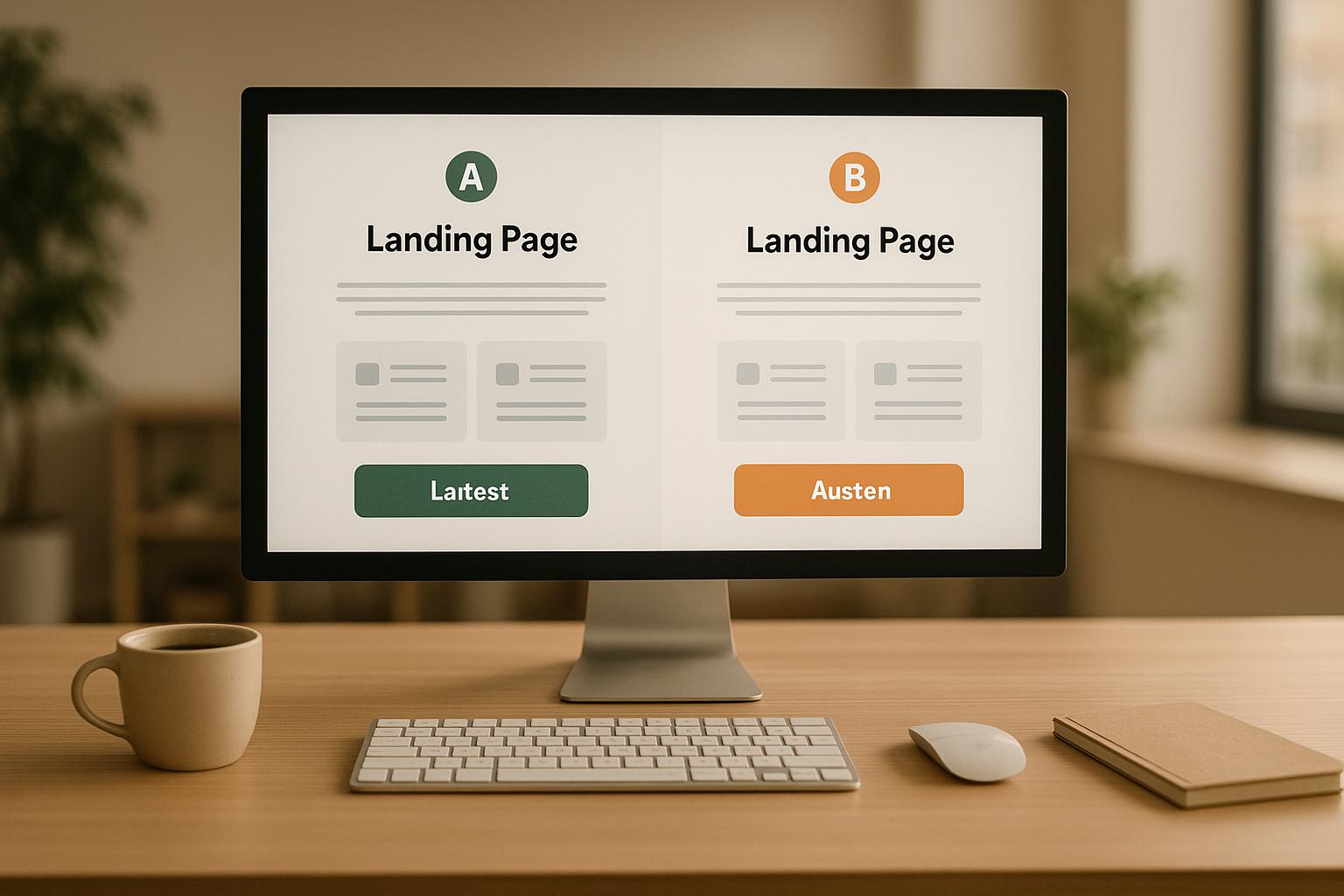Want to know if your ad spend is paying off? ROAS (Return on Ad Spend) is the key metric you need. It tells you how much revenue your ads generate for every dollar spent - essentially showing how efficient your advertising is.
Here’s the formula: Revenue from Ads ÷ Cost of Ads. For example, if you spend $1,000 on ads and make $4,000 in sales, your ROAS is 4:1 (or 400%).
Why does ROAS matter?
- It helps you measure the success of your campaigns.
- It identifies which ads are worth scaling or cutting.
- It ensures your ad dollars are working as hard as possible.
Key points to remember:
- ROAS focuses on ad efficiency, while ROI considers overall profitability.
- A common benchmark is 4:1, but this depends on your industry and goals.
- Use tools like Google Ads and Analytics to track and optimize your ROAS.
The ROAS Formula Breakdown
How the ROAS Formula Works
The formula for ROAS is simple: Revenue from Ads ÷ Cost of Ads. For example, if you generate $10,000 in revenue from a $2,000 ad spend, your ROAS would be 5:1.
To get accurate ROAS numbers, you need to account for all direct advertising expenses. This means including not just the ad spend itself but also related costs like platform fees, creative production, vendor fees, commissions, salaries, and transaction fees. For instance, if you spend $5,000 on Google Ads, pay $1,000 in management fees, and invest $500 in creative assets, your total ad cost is $6,500 - not just the $5,000 ad spend. Using the full cost ensures your ROAS truly reflects the effectiveness of your ad investment.
Now that the basic formula is clear, let’s explore how to present your ROAS data effectively.
Common Formats for Reporting ROAS
ROAS can be reported in three main formats, each suited for specific use cases. Ratios (like 5:1) are great for quick comparisons across campaigns or channels. Multipliers (e.g., 5x) are ideal for internal dashboards and performance reviews. Percentages (such as 500%) resonate well with stakeholders who may find this format more intuitive.
Here’s a quick breakdown of when to use each format:
| Format | Example | Best Used For |
|---|---|---|
| Ratio | 5:1 | Internal analysis, quick comparisons |
| Multiplier | 5x | Dashboards, team performance reviews |
| Percentage | 500% | Executive reports, stakeholder presentations |
While the data remains the same, presenting it in the right format can make it more accessible to your audience.
Step-by-Step ROAS Calculation Example
Let’s walk through a detailed example of calculating ROAS for a campaign. Imagine you’re running a PPC campaign for an e-commerce business based in the United States.
Step 1: Determine Total Revenue from Ads
Your campaign generated $25,000 in tracked sales over the past month. This includes all purchases attributed to your advertising efforts through proper tracking and attribution.
Step 2: Calculate Total Ad Spend
Break down your expenses: $4,000 on Google Ads, $1,000 on Facebook Ads, and $6,000 in creative, management, and analytics fees. This gives you a total ad cost of $6,000.
Step 3: Use the ROAS Formula
ROAS = $25,000 ÷ $6,000 ≈ 4.17
Step 4: Present the Results in Different Formats
- Ratio: 4.17:1 (or rounded to 4:1)
- Multiplier: 4.17x
- Percentage: 417%
A ROAS of 4.17:1 suggests strong performance compared to the common 4:1 benchmark. However, remember that profitability also depends on your profit margins and other operational costs not included in the ROAS calculation.
How to Calculate ROAS in Google Ads (And Why It’s Important)
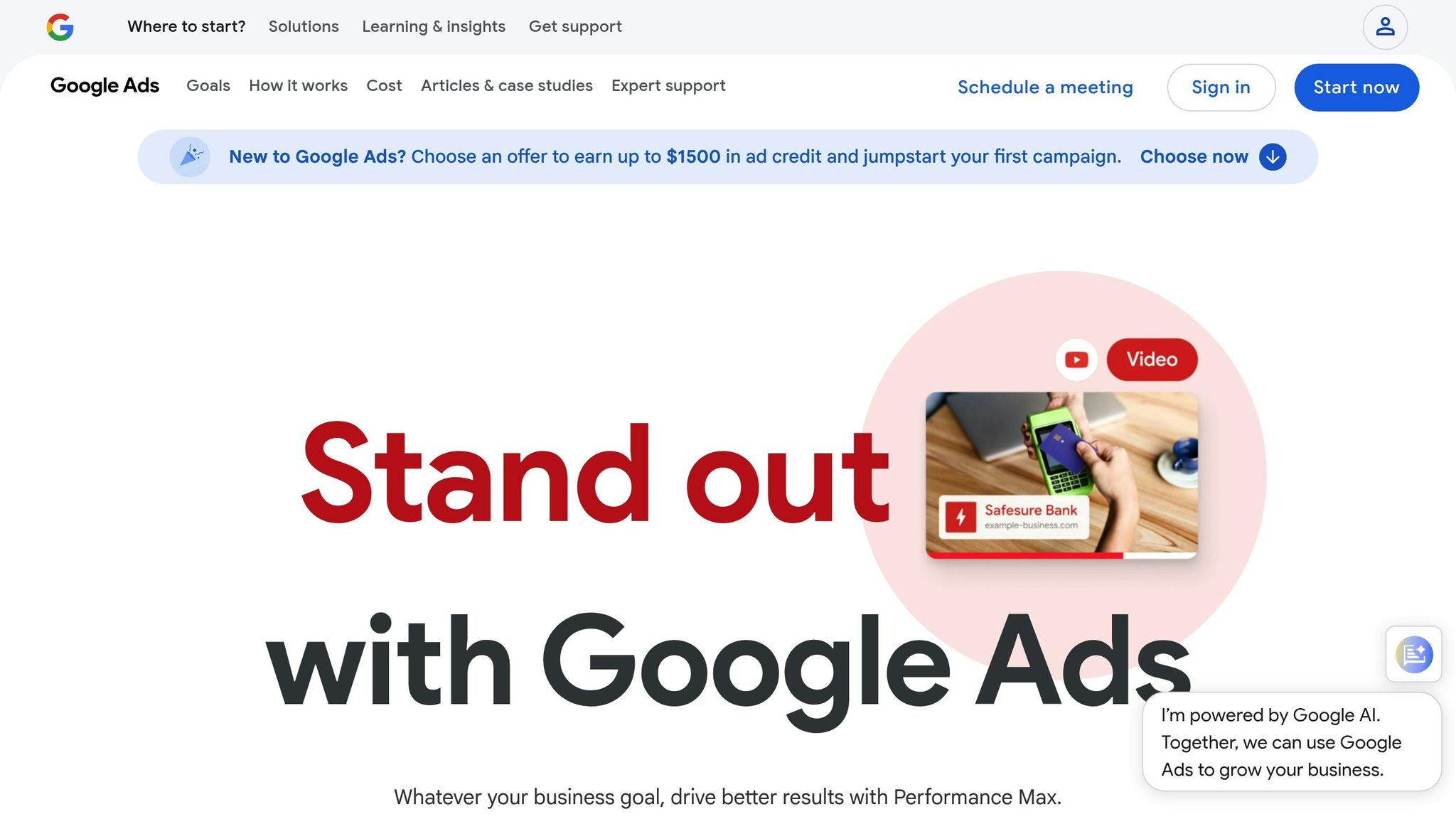
How to Use ROAS to Evaluate and Optimize PPC Campaigns
Once you've mastered the basics of calculating ROAS, the next step is putting that knowledge to work. The real value of ROAS lies in using it to guide decisions that enhance campaign performance and ensure you're getting the most out of your advertising budget.
Setting ROAS Benchmarks
Setting realistic ROAS benchmarks isn't as simple as picking a number from an industry report. Start by calculating your break-even ROAS - this includes all associated costs and indicates the minimum ROAS you need to avoid losing money. A common benchmark is 4:1, but this can vary widely depending on your industry.
Your benchmark should reflect your business model and profit margins. For some businesses, a ROAS of 2:1 might be enough to stay profitable, while others may need to hit 10:1 to meet their financial targets.
Industry context also plays a big role. For example, e-commerce brands often aim for higher ROAS during peak sales seasons when competition and ad costs are higher. In contrast, B2B companies with longer sales cycles might tolerate a lower initial ROAS because they focus on the lifetime value of their customers. Once you establish clear benchmarks, you can allocate your ad budgets more effectively.
Adjusting Campaign Budgets Based on ROAS
ROAS data is a powerful tool for managing budgets. Campaigns that exceed your benchmark deserve more investment, while those falling short may need their budgets reduced - or even paused altogether.
Take this example: Campaign A delivers a 4:1 ROAS, while Campaign B achieves only 2:1. Even if Campaign B generates more revenue, it makes sense to shift budget toward Campaign A because it’s delivering a better return. As you scale successful campaigns, you may notice returns dip slightly when you expand audience targeting or increase bids. Testing new audiences or creative approaches can help maintain strong results. Additionally, automated bidding strategies that prioritize high-ROAS conversions can help optimize budgets in real time.
That said, don’t be too quick to give up on campaigns with lower ROAS. Dig deeper to identify potential issues - maybe the targeting is off, the ad copy needs improvement, or the landing page isn’t converting. Making adjustments in these areas can sometimes turn an underperforming campaign around. Breaking campaigns into smaller segments can also reveal performance differences and help you refine your approach.
Segmenting Campaigns by ROAS Targets
Segmenting campaigns based on ROAS performance allows for more precise management and resource allocation. You can create segments based on factors like product categories, geographic locations, audience demographics, or advertising channels.
For instance, a retailer might segment campaigns by product line to identify which categories deliver the best returns. This insight enables targeted adjustments - shifting budgets to high-performing segments and refining strategies for weaker ones.
Geographic segmentation is another useful approach. Campaign performance often varies by region, and tailoring your messaging and budget distribution accordingly can make a big difference. Proper segmentation not only improves tracking but also helps you make smarter optimization decisions across all aspects of your campaigns.
For U.S. advertisers looking to streamline this process, the Top PPC Marketing Directory offers tools and services designed to simplify campaign segmentation and ROAS tracking. These resources can help you manage bids, track performance, and optimize campaigns to meet your specific ROAS goals more efficiently.
sbb-itb-89b8f36
Tools and Resources for ROAS Tracking
Tracking return on ad spend (ROAS) and managing campaigns effectively requires the right tools and resources. Let’s explore how these tools play a role in optimizing your PPC efforts.
The Role of PPC Optimization Tools
PPC optimization tools simplify and automate essential tasks like bid adjustments, keyword research, and performance tracking - all of which directly affect your ROAS.
In the U.S., platforms like Google Ads, Microsoft Advertising, and various third-party solutions are widely used. Google Ads, for instance, provides built-in ROAS tracking and automated bidding strategies tailored to hit target ROAS goals. Other platforms focus on delivering competitive keyword insights and campaign analysis to help refine your strategy.
Bid management tools adjust bids in real-time based on campaign performance, ensuring your budget is spent on the most effective keywords and ad placements. Similarly, keyword research tools help pinpoint search terms that drive conversions while minimizing wasted spend on underperforming ones. This approach ensures your ad dollars are directed toward high-performing segments, improving overall efficiency and ROAS.
Many U.S. businesses rely on Google Ads' detailed reporting features, which allow them to monitor ROAS at the campaign, ad group, and keyword levels. This enables quick adjustments, such as pausing low-performing ads or reallocating budgets to higher-yield campaigns.
Performance tracking tools like Google Analytics and Facebook Ads Manager further enhance campaign optimization. These tools allow marketers to create custom dashboards, set up alerts for underperforming campaigns, and run A/B tests to determine which ad creatives deliver the best results - critical steps for improving ROAS.
For businesses looking to explore specialized tools, curated directories offer an excellent starting point.
Finding Solutions with Top PPC Marketing Directory
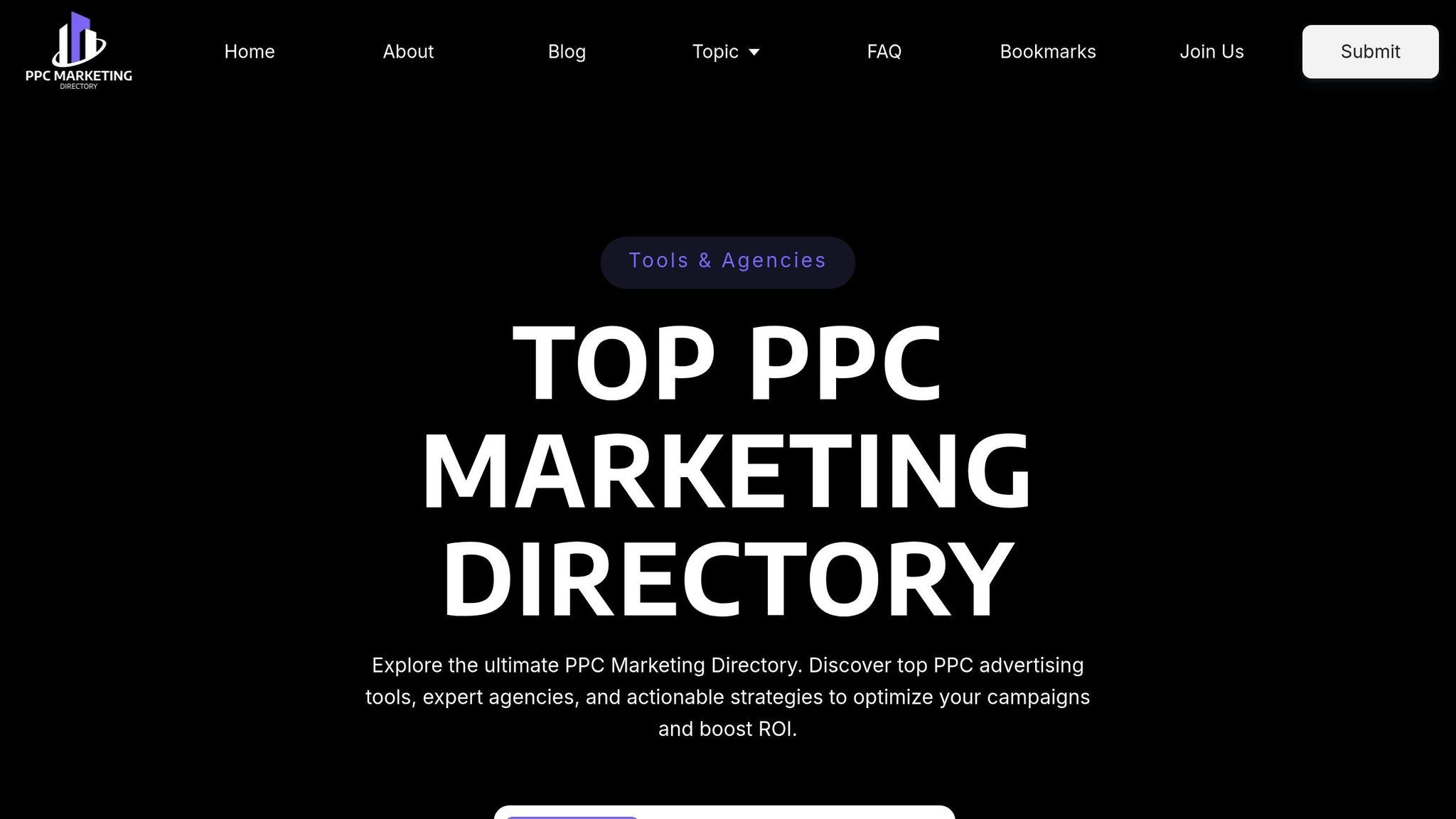
The Top PPC Marketing Directory is a valuable resource for U.S. businesses seeking expert tools, agencies, and services to improve their ROAS. Instead of spending countless hours researching solutions, this directory simplifies the process by categorizing providers based on their expertise.
The directory covers key aspects of PPC management, including bid adjustments, keyword research, ad copy optimization, retargeting, A/B testing, and performance tracking. This allows businesses to find tools tailored to specific campaign needs rather than relying on generic solutions.
When choosing tools or agencies through the directory, it’s important to look for features like easy integration with existing analytics platforms, automated ROAS tracking, and clear, transparent reporting. Reviewing case studies and client feedback can also help ensure that the selected provider aligns with your business goals and ROAS targets.
Using a curated directory like this not only saves time but also connects businesses with industry-specific solutions. These tailored recommendations are particularly helpful for companies with unique challenges or niche markets, ensuring their PPC strategies are aligned with their conversion cycles.
Integrating Analytics for Better ROAS Insights
Beyond optimization tools, integrating analytics platforms can take your ROAS tracking to the next level. By linking PPC platforms with tools like Google Analytics, businesses can gain a complete view of the customer journey - from the initial ad click to the final conversion. This detailed tracking reveals which campaigns and touchpoints contribute most to revenue.
Multi-touch attribution is especially useful, as it shows how different interactions work together to drive conversions. This leads to more accurate ROAS calculations and smarter budget allocation.
To set up integrated tracking, you’ll need to link your Google Ads and Google Analytics accounts, enable conversion tracking in Google Ads to record sales or leads, and define goals or e-commerce tracking in Google Analytics to capture revenue data. Once connected, Google Ads can calculate ROAS for each campaign automatically.
Additional platforms like Adverity and Ruler Analytics can further enhance these insights. Adverity consolidates PPC data from over 500 sources, providing a comprehensive view of how various marketing efforts impact ROAS. Meanwhile, Ruler Analytics specializes in multi-touch attribution, impression tracking, and connecting marketing actions directly to revenue.
These advanced tools use AI-driven insights and predictive analytics to optimize bids, identify top-performing segments, and forecast campaign performance. They also address challenges like incomplete conversion tracking or attribution gaps. Tools like Google Tag Manager can help ensure seamless conversion tracking and cross-channel attribution, giving you a more complete picture of your campaign performance.
Key Takeaways on ROAS for PPC Campaigns
Let’s break down the essentials for mastering ROAS (Return on Ad Spend) in your PPC campaigns. From understanding its importance to actionable strategies, here’s what you need to know.
ROAS: The Metric That Matters
ROAS measures how much revenue you earn for every dollar spent on advertising, making it a cornerstone metric for evaluating campaign success and efficiency. Unlike metrics that focus on clicks or engagement, ROAS zeroes in on what truly counts - how much value your ad dollars are bringing to your business.
For example, a 4:1 ROAS means that every $1 spent generates $4 in revenue. This simple ratio provides clear insight into profitability and helps guide decisions about budget allocation and campaign optimization.
ROAS targets differ by industry and business model. While some businesses thrive with a 2:1 break-even ROAS, others need a 10:1 ratio to stay profitable. The key is understanding your cost structure and defining the minimum ROAS you need to achieve your goals.
How to Improve ROAS
To get the most out of your PPC campaigns, focus on these strategies:
- Analyze and refine performance regularly. Keep an eye on campaign metrics to identify areas for improvement. Adjust targeting to focus on high-converting audiences, and fine-tune your ad copy to boost relevance and engagement.
- Run A/B tests on ads and placements. Test different creative formats, audience segments, and platforms to pinpoint what resonates most with your audience. Using negative keywords also helps eliminate wasted spend on irrelevant searches.
- Reallocate your budget wisely. Shift funds from underperforming segments to campaigns or keywords that yield higher ROAS. This ongoing optimization ensures your budget is working as efficiently as possible.
- Leverage automation and machine learning tools. These tools can adjust bids in real time based on performance data, directing your budget toward the most effective placements and keywords without requiring constant manual adjustments.
Tools and Resources for PPC Success
To maximize ROAS, having the right tools and resources is crucial:
- Explore specialized PPC directories. Resources like the Top PPC Marketing Directory provide a curated list of tools, agencies, and services that can help improve campaign management, bid strategies, and performance tracking.
- Use advanced analytics and attribution tools. Multi-touch attribution tools give a clearer picture of how various customer interactions contribute to conversions. This leads to more accurate ROAS tracking and smarter budget allocation.
- Stay up to date on trends and best practices. As competition grows and ad costs rise, staying informed is essential. Businesses that consistently optimize for ROAS often see significant improvements, with case studies showing increases from 3:1 to 6:1 within six months when advanced strategies are applied.
FAQs
What is the best way to calculate the break-even ROAS for my business?
To figure out your break-even ROAS (Return on Ad Spend), you need to identify the point where your revenue from advertising matches your costs. The formula is straightforward:
Break-even ROAS = 1 ÷ Profit Margin
Let’s break it down with an example: if your profit margin is 25% (or 0.25), the calculation would be 1 ÷ 0.25 = 4.0. This means you’d need to generate $4 in revenue for every $1 spent on ads just to cover your expenses.
Knowing your break-even ROAS is a game-changer. It gives you a clear target for your PPC campaigns, helps you measure ad performance effectively, and ensures you’re not just spending but also staying profitable.
How can I improve ROAS in poorly performing PPC campaigns?
Improving ROAS (Return on Ad Spend) in underperforming PPC campaigns calls for a thoughtful and data-driven strategy. Start by diving into your campaign metrics to pinpoint inefficiencies. Look for high-cost keywords that aren't converting or ad creatives that aren't delivering results. These are prime areas for improvement.
Fine-tune your audience targeting by focusing on specific demographics, interests, or behaviors that align with your goals. To find what clicks with your audience, experiment with different ad creatives and formats using A/B testing. This approach can reveal which ads drive better engagement and conversions. Additionally, consider adjusting your bids and shifting budget toward campaigns or keywords that are already performing well.
Don’t overlook your landing pages - they play a crucial role in conversions. A fast-loading, easy-to-navigate landing page with a clear and compelling call-to-action can make a big difference. By optimizing these elements, you'll be on track to boost your ROAS and get more value from your ad spend.
How can multi-touch attribution tools improve ROAS tracking and help allocate budgets more effectively?
Multi-touch attribution tools improve how businesses track ROAS (Return on Ad Spend) by painting a more detailed picture of how various marketing channels and interactions contribute to conversions. Rather than assigning all credit to just one interaction, these tools spread the credit across multiple touchpoints, giving a more precise understanding of how campaigns are performing.
This insight helps businesses identify which channels deliver the most value. With this information, they can allocate budgets more effectively, ensuring marketing dollars go toward strategies and platforms that generate the best results. The result? Smarter spending and better overall campaign outcomes.
